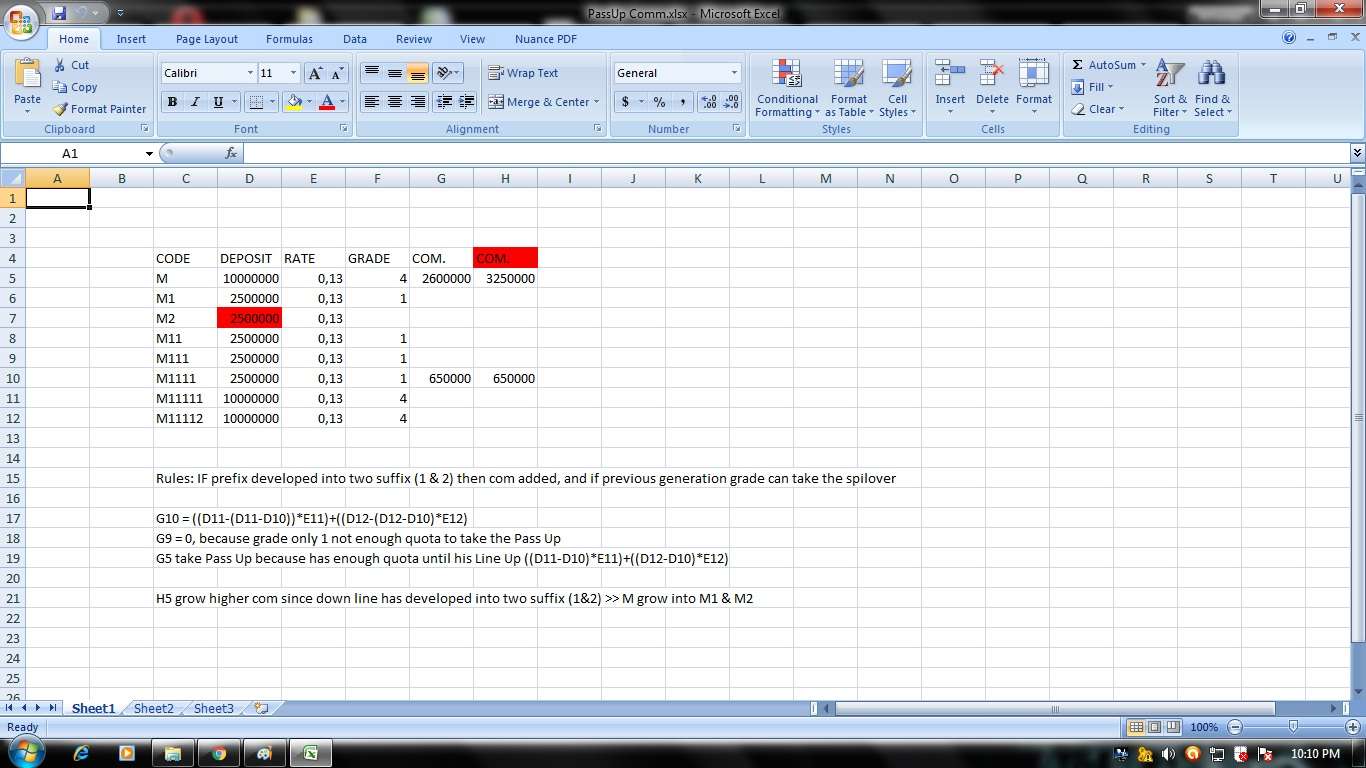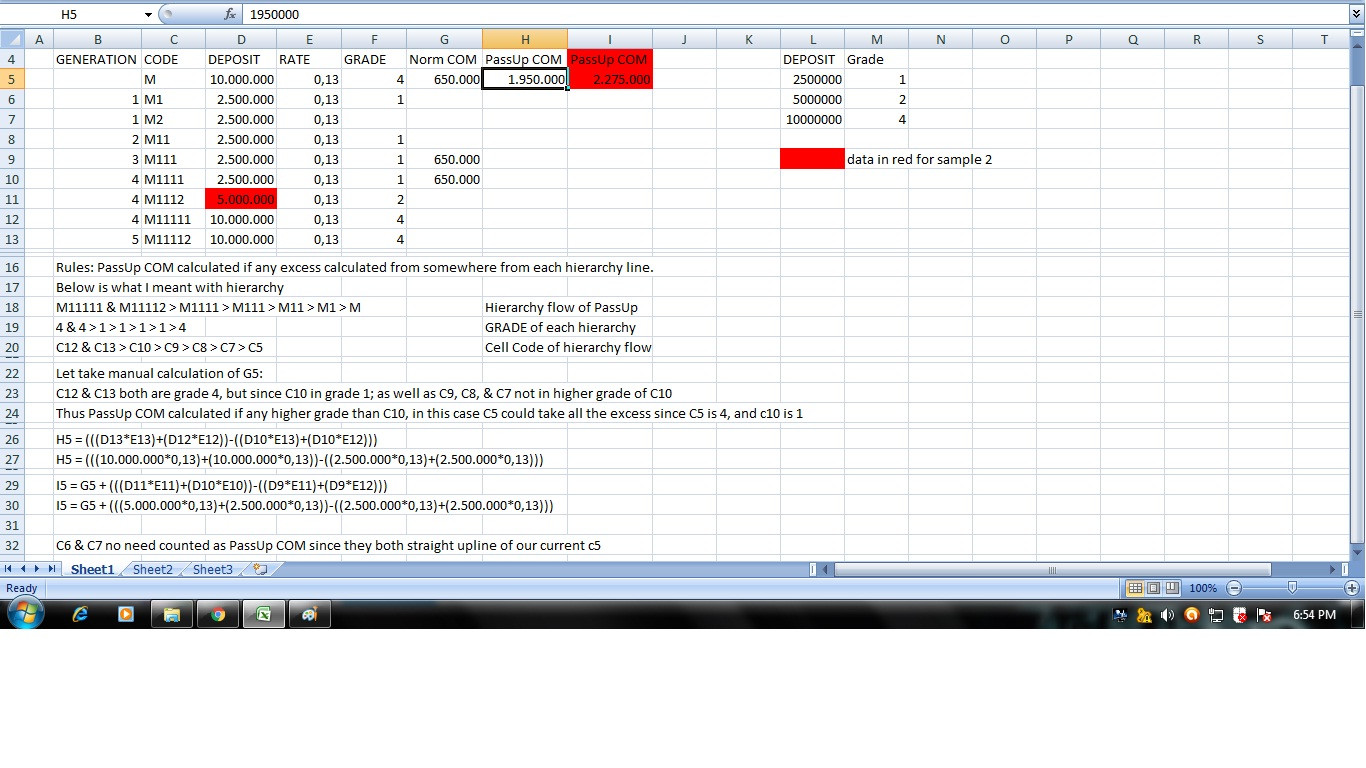Before we go further, I let u take a brief explaination about some analogy:
* Code (Column C) is generate as derivative of 1 character left before, and every code only need to developed into 2 (1 & 2). Let take a simple tour:
M only could developed into M1 & M2 ==> first generation of M,
M1 only could developed into M11 & M12 ==> second generation of M , first generation of M1
M12 as well only could developed into M121 & M122 ==> third generation of M, second generation of M1 and first generation of M12
Continue until 10 generation for every code.
* Norm COM (Column G),I provide here just for reference.
Norm COM is a result of 2 developed code and will calculate base on some IF rule below example.
G5 = 650.000 ==> because in column C we have M1 with deposit 2.500.000
as well as we found M2 with deposit also 2.500.000. They both have the same rate 0,13.
Since grade of M1 & M2 is in lower grade than M ( 1 & 1 < 4 ) thus we calculated base on M first derivative ( which is M1 & M2)
G5 = IF (G6*E6)+(G7*E7) > (G5*E5)+(G5*E5), (G5*E5)+(G5*E5), (G6*E6)+(G7*E7) ==> M1 & M2 developed result
G9 = IF (D10*E10)+(D11*E11) > (D9*E9)+(D9*E9), (D9*E9)+(D9*E9), (D10*E10)+(D11*E11) ==> M1111 & M1112 developed result
G10 = IF (D12*E12)+(D13*E13) > (D10*E10)+(D10*E10), (D10*E10)+(D10*E10), (D12*E12)+(D13*E13) ==> M11111 & M11112 developed result
Noticed G6, G7, G8 not yet developed into 2 developed code, thus formula result blank (“ “).
* PassUp COM calculated different approach than Norm COM.
Formula will calculated with some ruled:
- Ignore 1st generation of code developed, because it not necessary in current cell (H5).
- Formula will scanned from very bottom generation that which under the tree code developed.
In very simple logic PassUp COM is passing excess of Norm COM, in this instances G10 is “true” result of formula, thus we “Passing” the EXCESS
(((D12*E12)-(D10*E10))+((D13*E13)-((D10*E10))))
only if any of each “prior generation” have higher grade than F10.
H5 = 1.950.000
During in this example we are not seeing any higher grade from each of prior generation of M1111 until our current M
M11111 & M11112 ==> M1111 ==> M111 ==> M11 ==> M1 ==> M Hierarchy Code
4 & 4 ==> 1 ==> 1 ==> 1 ==> 1 ==> 4 GRADE
But if prior generation have higher grade, in this special example lets say M111 is grade 2
4 & 4 ==> 1 ==> 2 ==> 1 ==> 1 ==> 4
((D12*E12)-(D10*E10)-((D9*E9)-(D10*E10)))+((D13*E13)-(D10*E10)-((D9*E9)-(D10*E10)))
Then result will become H5 = 1.300.000
Let make additional example, if we found a new higher grade in M1 which grade 4
4 & 4 ==> 1 ==> 2 ==> 1 ==> 4 ==> 4
(((D12*E12)-(D10*E10)-((D9*E9)-(D10*E10))-((D6*E6)-((D9*E9)-(D10*E10))-(D10*E10)))
+
((D13*E13)-(D10*E10)-((D9*E9)-(D10*E10))-((D6*E6)-((D9*E9)-(D10*E10))-(D10*E10))) )
Then result will become H5 = 0
Hereby i like to edited
the question image








